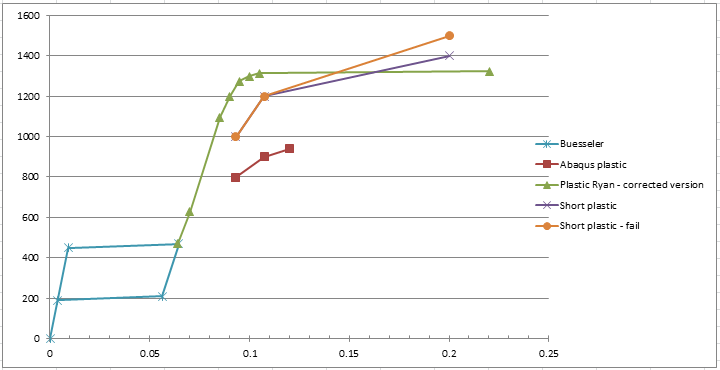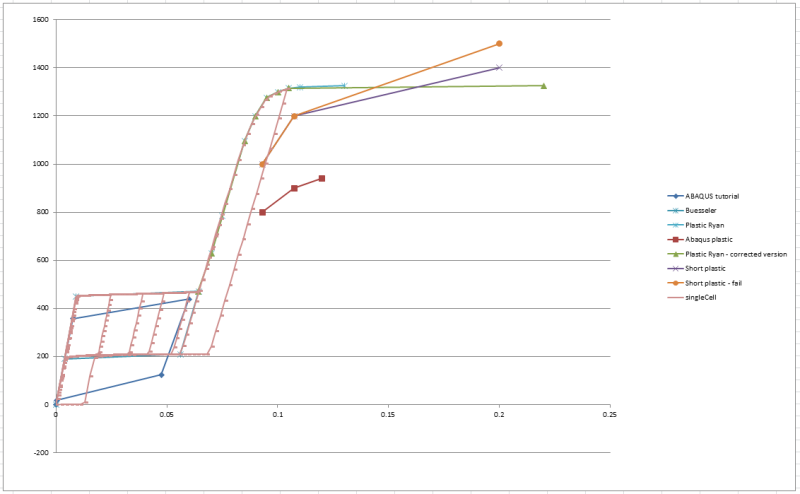I've been noticing some really odd problems with the nitinol material definitions when trying to use plasticity. I attached my model, but I'll describe it as well.
I have a simple stent structure going through a 3 stage expansion with anneal/crimp/deploy/load. During the crimp step it sees very high stress/strains. I estimate I should be somewhere in the 12-13% strain, so I switched from the elastic model to plastic model. The elastic model solves just fine by the way. When I put in the "real" values of my tensile data, the model failed. When I simplified and artificially "softened" the material everything solved just fine. Next, I re-ran it with another very simple plastic definition (only 3 data points), but with higher stress-values (stiffer), and this failed. It seems like plasticity model works when the nitinol is relatively soft, but if it can withstand higher stress levels at UTS, the model fails on me.
Has anyone else seen this before? I confirmed the same behavior on another model I've been working on lately as well.
I have a simple stent structure going through a 3 stage expansion with anneal/crimp/deploy/load. During the crimp step it sees very high stress/strains. I estimate I should be somewhere in the 12-13% strain, so I switched from the elastic model to plastic model. The elastic model solves just fine by the way. When I put in the "real" values of my tensile data, the model failed. When I simplified and artificially "softened" the material everything solved just fine. Next, I re-ran it with another very simple plastic definition (only 3 data points), but with higher stress-values (stiffer), and this failed. It seems like plasticity model works when the nitinol is relatively soft, but if it can withstand higher stress levels at UTS, the model fails on me.
Has anyone else seen this before? I confirmed the same behavior on another model I've been working on lately as well.


